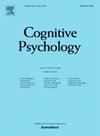Word order effects in sentence reading
IF 3
2区 心理学
Q1 PSYCHOLOGY
引用次数: 0
Abstract
The SEAM model (Rabe et al., 2024) and the OB1-Reader model (Snell, van Leipsig, et al., 2018) suggest that readers lexically process words in parallel, with the OB1 model further specifying that those words are formed into a sentence-level representation irrespective of their order of presentation. The serial model, E-Z Reader (Reichle, 2011), in contrast, stipulates that words are identified serially and sequentially. The current eye tracking experiment investigated whether, how frequently, and how rapidly readers detect sentential anomalies arising from word transpositions and ungrammatical sentence final words. We also assessed the consequences in the eye movement record of processing such transpositions and ungrammaticalities to evaluate theoretical claims extrapolated from different eye movement models. This was done via target word pair (transposed vs. non-transposed) and a final word grammaticality (grammatical vs. ungrammatical) experimental manipulations. Readers were better at judging the grammaticality of sentences containing both a word transposition and an ungrammatical final word than those with solely a word transposition. Critically, transposed words caused significant disruption to reading, but not prior to readers fixating the first word of the transposed word pair. Furthermore, an ungrammatical sentence-final word attracted readers’ fixations and caused increased re-reading in the absence of a word transposition compared to when it was preceded by a transposed word pair. Together the results show the importance of canonical word order for natural undisrupted reading and question claims for parallel lexical identification in relation to eye movement control during reading.
语序对句子阅读的影响
SEAM模型(Rabe et al., 2024)和OB1- reader模型(Snell, van Leipsig, et al., 2018)表明,读者在词汇上并行处理单词,OB1模型进一步规定,无论这些单词的呈现顺序如何,它们都被形成句子级表示。而序列模型E-Z Reader (Reichle, 2011)则相反,它规定单词是按顺序和顺序识别的。当前的眼动追踪实验调查了读者是否、多频繁、多快地发现由单词换位和不符合语法的句子末词引起的句子异常。我们还评估了处理这些移位和不符合语法的眼动记录的后果,以评估从不同眼动模型推断的理论主张。这是通过目标单词对(转置与非转置)和最终单词语法性(语法与非语法)实验操作来完成的。读者在判断同时包含一个单词换位和一个不符合语法的最后一个单词的句子的语法性方面比那些只有一个单词换位的句子更好。关键的是,调换的单词对阅读造成了显著的干扰,但不是在读者注意到调换的单词对的第一个单词之前。此外,一个不符合语法的句子结尾词会吸引读者的注意力,并且在没有换位词的情况下,与前面有换位词对的情况相比,会导致更多的重复阅读。综上所述,研究结果表明规范语序对自然不间断阅读的重要性,并对平行词汇识别在阅读过程中与眼动控制有关的主张提出质疑。
本文章由计算机程序翻译,如有差异,请以英文原文为准。
求助全文
约1分钟内获得全文
求助全文
来源期刊

Cognitive Psychology
医学-心理学
CiteScore
5.40
自引率
3.80%
发文量
29
审稿时长
50 days
期刊介绍:
Cognitive Psychology is concerned with advances in the study of attention, memory, language processing, perception, problem solving, and thinking. Cognitive Psychology specializes in extensive articles that have a major impact on cognitive theory and provide new theoretical advances.
Research Areas include:
• Artificial intelligence
• Developmental psychology
• Linguistics
• Neurophysiology
• Social psychology.
 求助内容:
求助内容: 应助结果提醒方式:
应助结果提醒方式:


